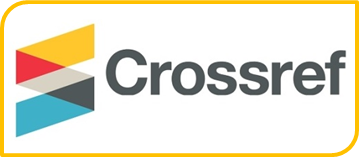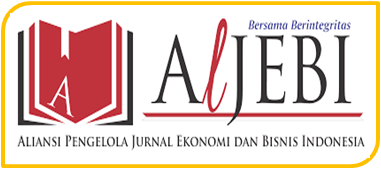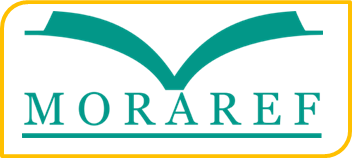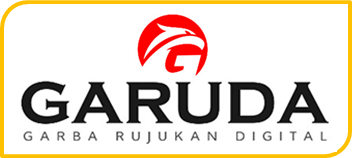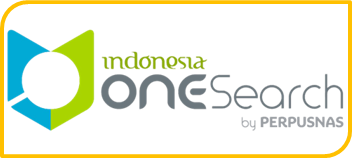Analysis of Factors Influencing Public Preference for Waqf Products in Islamic Insurance: Evidence in Tasikmalaya City
Abstract
Keywords
Full Text:
PDFReferences
Abdullah, M. (2019). Waqf and trust: the nature, structures and socio-economic impacts. Journal of Islamic Accounting and Business Research, 10(4), 512–527. https://doi.org/10.1108/JIABR-10-2016-0124
Ahmad, R., Ali, M. N., Said, R., Abu Bakar, M., Abdul Manan, F. N., & Albasri, S. H. (2022). Introduction to Waqf –Takaful Compensation Model: Adopting the Maqasid Shariah Concept for Socio-Economic Development in Malaysia. International Journal of Academic Research in Business and Social Sciences, 12(8). https://doi.org/10.6007/IJARBSS/v12-i8/14680
Ahyani, H., Solehudin, E., Mutmainah, N., & Adnan, N. I. M. (2024). Integration of productive waqf in Sharia insurance: Enhancing investment and life protection. Review of Islamic Social Finance and Entrepreneurship, 169–183. https://doi.org/10.20885/RISFE.vol3.iss2.art5
Aisyah, L., Noval, M., & Darmawati, D. (2021). The Impact of Productive Waqf’s Implementation to the Development of Sharia Economics in South Kalimantan. Al-Tijary, 165–180. https://doi.org/10.21093/at.v6i2.3423
Arifin, S., Nugraha, A. A., & Sulistiyo, E. Y. (2021). Strategy to Improve Public Recognition of Insurance Waqf (Case Study of Allianz Sharia Insurance Waqf Feature Products). Journal Research of Social, Science, Economics, and Management, 1(6), 621–631. https://doi.org/10.36418/jrssem.v1i6.83
Batubara, C., Pujiyanti, L., & Syahriza, R. (2024). The Development Strategy of Waqf Insurance Benefits and Investment Benefits in Islamic Life Insurance PT. Takaful Medan Branch. International Journal of Economics Development Research (IJEDR), 5(1), 16–27. https://doi.org/10.37385/ijedr.v5i1.4304
Brožová, H., Šup, L., Rydval, J., Sadok, M., & Bednar, P. (2016). Information Security Management: ANP Based Approach for Risk Analysis and Decision Making. Agris On-Line Papers in Economics and Informatics, VIII(1), 13–23. https://doi.org/10.7160/aol.2016.080102
Cahyandari, R., Kalfin, Sukono, Purwani, S., Ratnasari, D., Herawati, T., & Mahdi, S. (2023). The Development of Sharia Insurance and Its Future Sustainability in Risk Management: A Systematic Literature Review. Sustainability, 15(10), 8130. https://doi.org/10.3390/su15108130
Cheron, C., Salvagni, J., & Colomby, R. K. (2022). The Qualitative Approach Interview in Administration: A Guide for Researchers. Revista de Administração Contemporânea, 26(4). https://doi.org/10.1590/1982-7849rac2022210011.en
Dakwah, M. M., Roodhi, M. N., Suprayetno, D., Kusmayadi, I., Abdurrahman, A., & Hammad, R. (2024). Determining a Digital Marketing Strategy Using a Combination of Analytical Network Process (ANP) and Profile Matching. Jurnal Bumigora Information Technology (BITe), 6(1), 47–58. https://doi.org/10.30812/bite.v6i1.4125
Darmawan, D. P. (2018). Analytic Network Process : Untuk Pengambilan Keputusan Dalam Lingkungan Bisnis Yang Kompleks. Expert, 115.
Dewi, M. P., & Nengsih, I. (2021). Development Strategy of Waqf through The Instrument of The Testament of Sharia Insurance Policy. Management and Economic Journal (MEC-J), 5(1), 89–102. https://doi.org/10.18860/mec-j.v5i1.10845
Fei, L. (2020). D-ANP: a multiple criteria decision making method for supplier selection. Applied Intelligence, 50(8), 2537–2554. https://doi.org/10.1007/s10489-020-01639-x
Hadi, E. F., Huzaini, M., & Hidayat, A. A. (2023). Factors Influencing the Interest of the Muslim Generation in Cash Waqf in West Nusa Tenggara Province. International Journal of Multidisciplinary Research and Analysis, 06(10). https://doi.org/10.47191/ijmra/v6-i10-21
Hakim, M. L., & Asiyah, S. (2020). Perkembangan Wakaf Asuransi Syariah di Indonesia Pasca Terbitnya Fatwa DSN-MUI No. l06 Tahun 2016. Islamic Review: Jurnal Riset Dan Kajian Keislaman, 9(2), 191–208. https://doi.org/10.35878/islamicreview.v9i2.223
Hidayat, A. A., Huzaini, M., & Ro’is, I. (2024). Minat Masyarakat Kota Mataram Berwakaf Uang Yang Dimoderasi Oleh Religiusitas. Jurnal Ilmiah Global Education, 5(1), 750–760. https://doi.org/10.55681/jige.v5i1.2512
Imaniyati, N. S., Firmansyah, A., Alamsyah, I. F., & Kamilah, A. (2024). The Function of Sharia Banks in Optimizing Waqf as the Integration of the Commercial Economy and Social Economy to Improve Public Welfare. KnE Social Sciences. https://doi.org/10.18502/kss.v9i24.16848
Iqbal, M. (2021). The Concept of Waqf in Sharia Insurance (Analysis Study of Life Insurance Participation in Financing Customers at Bank Sumsel Babel Sharia). Jurnal I-Philanthropy: A Research Journal On Management Of Zakat and Waqf, 1(1), 17–34. https://doi.org/10.19109/iphi.v1i1.9513
Jalaluddin, Majid, M. S. A., & Agustina, M. (2023). The Role of Waqf in Islamic Life Insurance: The Dual Benefits of Insurance and Investment in View of Fatwa of Indonesian Ulema Council. 2023 International Conference on Sustainable Islamic Business and Finance (SIBF), 271–275. https://doi.org/10.1109/SIBF60067.2023.10380044
Khamim, Asyharul Muala, & Muhammad Lutfi Hakim. (2023). Cash Waqf Linked Sukuk for Islamic Social Welfare and National Development: Evidence from Indonesia. Global Journal Al Thaqafah, 13(1), 16–34. https://doi.org/10.7187/GJAT072023-2
Kheybari, S., Rezaie, F. M., & Farazmand, H. (2020). Analytic network process: An overview of applications. Applied Mathematics and Computation, 367, 124780. https://doi.org/10.1016/j.amc.2019.124780
Kuswanto, D. H., Rahayu, Y. N., & Rohman, T. N. (2024). The Influence of Knowledge, Religiosity on Cash Waqf Interest in Trust Mediation. Jesya, 7(2), 1789–1799. https://doi.org/10.36778/jesya.v7i2.1710
Maulina, R., Dhewanto, W., & Faturohman, T. (2023). The integration of Islamic social and commercial finance (IISCF): Systematic literature review, bibliometric analysis, conceptual framework, and future research opportunities. Heliyon, 9(11), e21612. https://doi.org/10.1016/j.heliyon.2023.e21612
Medias, F., Rahman, A. A., Susamto, A. A., & Pambuko, Z. B. (2022). A systematic literature review on the socio-economic roles of waqf : evidence from organization of the Islamic cooperation (OIC) countries. Journal of Islamic Accounting and Business Research, 13(1), 177–193. https://doi.org/10.1108/JIABR-01-2021-0028
Moh Subhan. (2023). Wakaf Asuransi Syariah Perspektif Maqashid al-Shariah al-Ghazali. ASASI: Journal of Islamic Family Law, 3(2), 157–174. https://doi.org/10.36420/asasi.v3i2.284
Mu, E., Cooper, O., & Peasley, M. (2020). Best practices in Analytic Network Process studies. Expert Systems with Applications, 159, 113536. https://doi.org/10.1016/j.eswa.2020.113536
Muhammad Syafi’i. (2019). Metode Pengembangan Wakaf Tunai Menurut Pemikiran Monze Khaf. At-Tasharruf; Jurnal Kajian Ekonomi Dan Bisnis Syariah, I(Nomor 2), 110.
Mutiara, M., Beik, I. S., & Nur Widigdo, A. M. (2021). Optimizing Strategy for Land-Based Waqf Development in Indonesia. Al-Iqtishad: Jurnal Ilmu Ekonomi Syariah, 13(1), 67–86. https://doi.org/10.15408/aiq.v13i1.20571
Nana, A. (2016). A proposed marriage between endowments, mutual insurance and the institution of agency in Islamic law: an introduction to the waqf-wakalah model of takaful. In Takaful and Islamic Cooperative Finance. Edward Elgar Publishing. https://doi.org/10.4337/9781785363368.00013
Noble, H., & Smith, J. (2014). Qualitative data analysis: a practical example. Evidence Based Nursing, 17(1), 2–3. https://doi.org/10.1136/eb-2013-101603
Nour Aldeen, K., Ratih, I. S., & Sari Pertiwi, R. (2022). Cash waqf from the millennials’ perspective: a case of Indonesia. ISRA International Journal of Islamic Finance, 14(1), 20–37. https://doi.org/10.1108/IJIF-10-2020-0223
R. Bambang Budhijana. (2019). Pemanfaatan Analytical Network Process (ANP) dalam Manajemen Strategi Differensiasi Marketing Mix pada Asuransi Syariah/Takaful di Indonesia. Academia.Edu.
Rumaf, M. A. N. (2024). Societal Behavior Towards Islamic Insurance: A Sociological and Anthropological Perspective on Sharia Economic Law. Mu’amalah: Jurnal Hukum Ekonomi Syariah, 3(1), 129. https://doi.org/10.32332/muamalah.v3i1.8606
Rusydiana, A. S., & Devi, A. (2013). Analytic Network Process : Pengantar Teori dan Aplikasi. Smart Publishing.
Sabah, Ş., & Oflazoğlu, S. (2024). The relation between donation motivations and the meaning in life. Journal of Islamic Marketing, 15(5), 1232–1252. https://doi.org/10.1108/JIMA-09-2022-0251
Sevkli, M., Oztekin, A., Uysal, O., Torlak, G., Turkyilmaz, A., & Delen, D. (2012). Development of a fuzzy ANP based SWOT analysis for the airline industry in Turkey. Expert Systems with Applications, 39(1), 14–24. https://doi.org/10.1016/j.eswa.2011.06.047
Shaikh, S. A., Ismail, A. G., & Mohd Shafiai, M. H. (2017). Application of waqf for social and development finance. ISRA International Journal of Islamic Finance, 9(1), 5–14. https://doi.org/10.1108/IJIF-07-2017-002
Sugiyono. (2013). Metode Penelitian Kuantitatif, Kualitatif Dan R&D. Alfabeta Bandung.
Susiatin, S., & Haji-Othman, Y. (2023). Optimization of Cash Waqf Development Through Sharia Life Insurance. International Journal of Academic Research in Business and Social Sciences, 13(9). https://doi.org/10.6007/IJARBSS/v13-i9/18368
Syarif As’ad, Muhammad Safar Nashir, & Sahraman D. Hadji Latif. (2024). The Role of Islamic Financial Education in Encouraging Customer Investment Behavior in Islamic Banking in Yogyakarta, Indonesia. Journal of Islamic Economic and Business Research, 4(1), 60–78. https://doi.org/10.18196/jiebr.v4i1.225
Thakkar, J. J. (2021). Analytic Network Process (ANP). Studies in Systems, Decision and Control, 336(2), 63–82. https://doi.org/10.1007/978-981-33-4745-8_4
Torong, L. O. B., & Lubis, F. A. (2022). Pengaruh Pengetahuan terhadap Minat Masyarakat Berasuransi Syariah di PT Prudential Syariah Binjai. El-Mal: Jurnal Kajian Ekonomi & Bisnis Islam, 4(2). https://doi.org/10.47467/elmal.v4i2.1412
Utama, A. N. B., Setiawati, R., Suryani, A. I., & Efrina, L. (2024). Basic strategic planning in supporting financial management. International Journal of Research in Finance and Management, 7(1), 538–544. https://doi.org/10.33545/26175754.2024.v7.i1f.334
Wadi, D. A., & Nurzaman, M. S. (2020). Millennials Behaviour towards Digital Waqf Innovation. International Journal of Islamic Economics and Finance (IJIEF), 3(3). https://doi.org/10.18196/ijief.3232
Wibowo, I. A., & Rohman, I. K. (2024). Efforts to Increase Public Awareness of Sharia Insurance Products in Indonesia Through Management Functions. Kontigensi : Jurnal Ilmiah Manajemen, 12(1), 195–209. https://doi.org/10.56457/jimk.v12i1.509
Wu, C.-S., Lin, C.-T., & Lee, C. (2010). Optimal marketing strategy: A decision-making with ANP and TOPSIS. International Journal of Production Economics, 127(1), 190–196. https://doi.org/10.1016/j.ijpe.2010.05.013
Yati, A. (2024). The Effect of Islamic Financial Socialization and Education on Public Interest in Using Islamic Banking Services. Nomico, 1(4), 29–41. https://doi.org/10.62872/a36kga52
Yusoff, H., Kamaruddin, M. I. H., Muhamed, N. A., & Darus, F. (2021). Corporate waqf: Discovering the primary challenges. The Journal of Muamalat and Islamic Finance Research, 96–110. https://doi.org/10.33102/jmifr.v18i2.373
Zainta, S. Y., & Aslami, N. (2022). Hambatan-Hambatan yang Dialami Perusahaan Asuransi Syariah Dalam Memasarkan Produknya. Transformasi Manageria: Journal of Islamic Education Management, 2(1), 36–50. https://doi.org/10.47467/manageria.v2i1.860
Zauro, N. A., Saad, R. A. J., Ahmi, A., & Mohd Hussin, M. Y. (2020). Integration of Waqf towards enhancing financial inclusion and socio-economic justice in Nigeria. International Journal of Ethics and Systems, 36(4), 491–505. https://doi.org/10.1108/IJOES-04-2020-0054
DOI: https://doi.org/10.18860/miec.v4i2.30021
Refbacks
- There are currently no refbacks.

This work is licensed under a Creative Commons Attribution-ShareAlike 4.0 International License.
Editorial Office:
Megawati Soekarnoputri Building
Faculty of Economics
Jln. Gajayana 50 Telp (0341) 558881
E-mail: m-iecjournal@uin-malang.ac.id
UIN Maulana Malik Ibrahim Malang
Member of:
Indexed by:
Maliki Islamic Economics Journal under a CC BY SA 4.0 International License.
View My Stats








